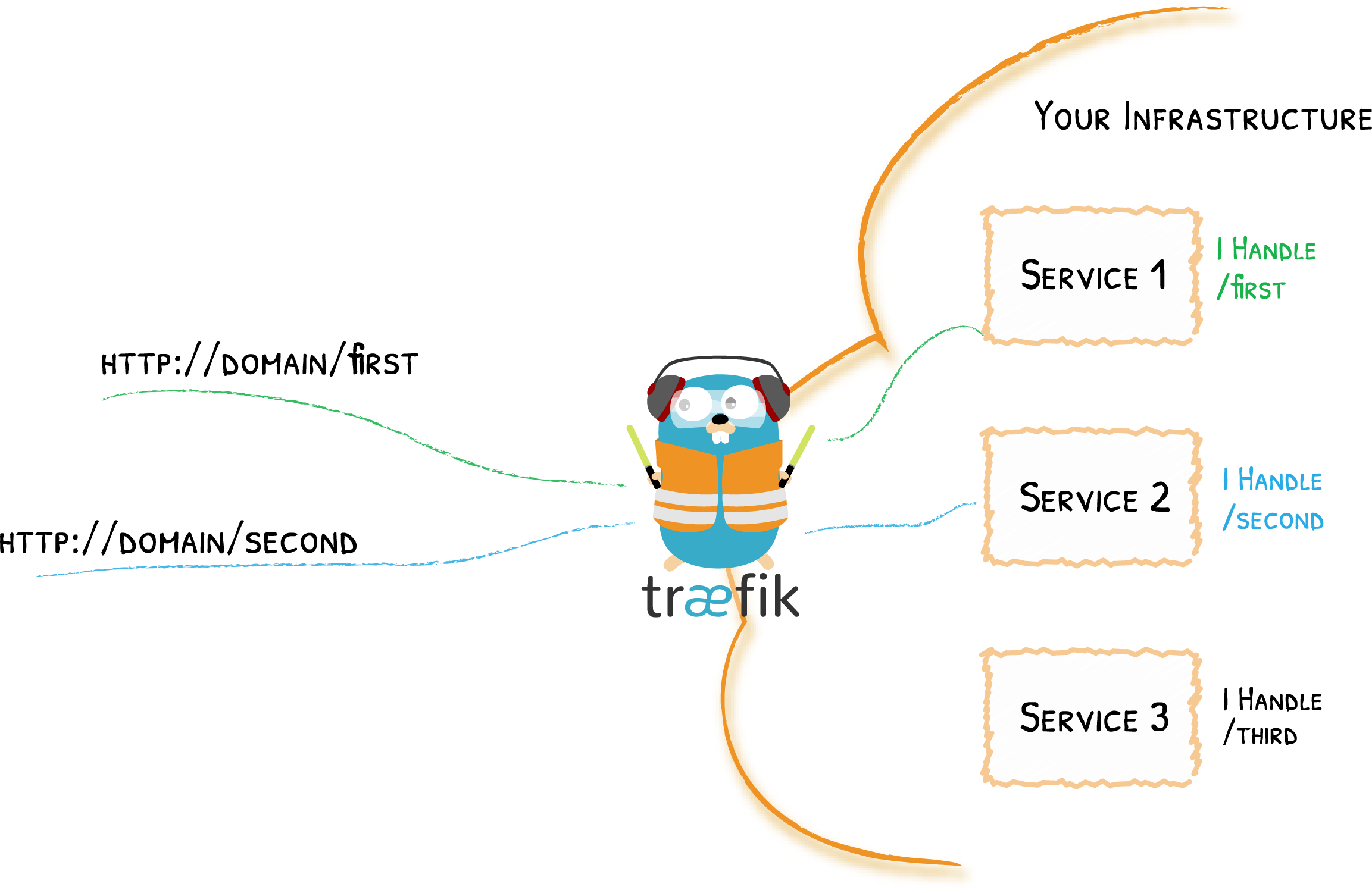Concepts¶
Everything You Need to Know
Edge Router¶
Traefik is an Edge Router, it means that it's the door to your platform, and that it intercepts and routes every incoming request: it knows all the logic and every rule that determine which services handle which requests (based on the path, the host, headers, and so on ...).

Auto Service Discovery¶
Where traditionally edge routers (or reverse proxies) need a configuration file that contains every possible route to your services, Traefik gets them from the services themselves.
Deploying your services, you attach information that tells Traefik the characteristics of the requests the services can handle.

It means that when a service is deployed, Traefik detects it immediately and updates the routing rules in real time. Similarly, when a service is removed from the infrastructure, the corresponding route is deleted accordingly.
You no longer need to create and synchronize configuration files cluttered with IP addresses or other rules.
Many different rules
In the example above, we used the request path to determine which service was in charge, but of course you can use many other different rules.
Updating the requests
In the middleware section, you can learn about how to update the requests before forwarding them to the services.
How does Traefik discover the services?
Traefik is able to use your cluster API to discover the services and read the attached information. In Traefik, these connectors are called providers because they provide the configuration to Traefik. To learn more about them, read the provider overview section.
Using Traefik for Business Applications?
If you are using Traefik for commercial applications, consider the Enterprise Edition. You can use it as your:
Traefik Enterprise enables centralized access management, distributed Let's Encrypt, and other advanced capabilities. Learn more in this 15-minute technical walkthrough.